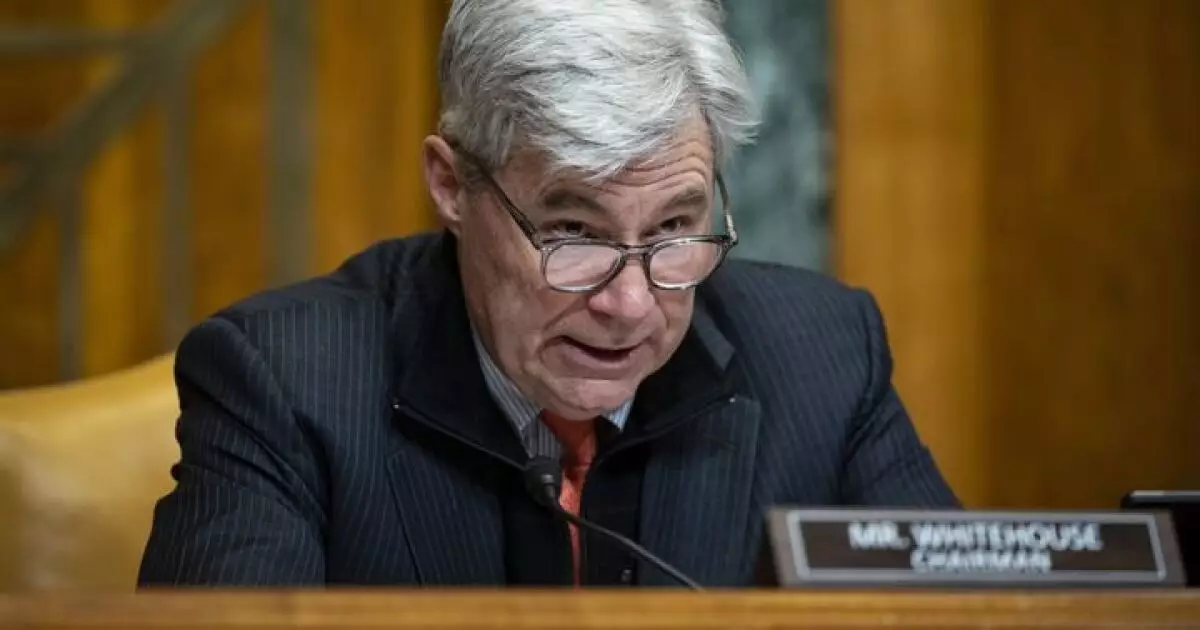The recent turmoil surrounding federal funding for infrastructure projects highlights the complexities of governance and the challenges faced by state and local agencies. A freeze on transportation funds, enacted and subsequently lifted by the White House, has left lawmakers and transportation officials in a state of confusion. This situation not only affects immediate projects but also poses longer-term challenges for infrastructure planning and funding stability across the country.
In a realm where bipartisan consensus is supposed to drive infrastructure development, any deviation from that common agreement can lead to serious disruptions. Senator Sheldon Whitehouse emphasized this sentiment, arguing that the integrity of congressional decisions hinges on the executive branch’s willingness to execute laws as intended. The frustration is palpable among lawmakers who perceive executive actions as potentially undermining the collective will expressed through bipartisan legislation. The confusion arises not just from the funding freeze itself but from the subsequent legal challenges and clarifications required to navigate the federal bureaucracy.
Despite the lifting of the funding freeze, the ramifications linger. In states like Rhode Island, the effects of the freeze can complicate existing transportation plans and cause delays in project timelines. Such disruptions can stall progress on critical infrastructure improvements, which are already under pressure from limited timelines and funding constraints under the Bipartisan Infrastructure Law, set to expire in 2026.
As officials grapple with an uncertain funding environment, they also must plan for the future. The mounting pressure to legislate new funding mechanisms for broadly defined infrastructure—spanning highways, transit systems, and broadband—presents a formidable challenge. Joung Lee from the American Association of State Highway and Transportation Officials (AASHTO) underscores the necessity for a comprehensive approach that prioritizes traditional surface transportation. This focus aligns with the desire to streamline funding sources, advocating for increased formula funding that can be more readily accessed by state and local governments.
The shift toward formula funding over discretionary grants stems from a desire for efficiency. Projects often languish due to the cumbersome application processes tied to competitive grants. Garrett Eucalitto, AASHTO’s president, points out that lengthy grant development can divert energy away from actual project execution, thus squandering valuable time and resources. Lawmakers from both parties, such as Senator Shelley Moore Capito, echo this sentiment, pushing for a return to more straightforward funding mechanisms that allow greater local discretion and responsiveness to regional transportation needs.
Concurrently, the Highway Trust Fund—a primary source of funding for transportation projects—is facing a precarious future. Absent proactive legislative measures, it is projected to run out of funds by 2027, raising alarm bells for stakeholders reliant on its continuity. The transition toward electric vehicles (EVs), which do not contribute to the traditional fuel tax model, exacerbates this situation. As more consumers gravitate toward EVs, the traditional funding mechanisms that have long sustained infrastructure projects face a credibility crisis.
In response, the Department of Transportation is reconsidering existing fuel economy standards that critics argue have become excessively burdensome for consumers. Secretary Sean Duffey’s recent actions and stated policy direction appear to signal a retreat from stringent regulatory standards associated with the previous administration’s green initiatives. This regulatory loosening raises questions about the long-term viability of sustainable funding solutions amid rising EV adoption.
On the ground, states are not akin to waiting idly for federal guidance; instead, they are forced to innovate and adapt to an evolving funding landscape. Many states have instituted their own fees and registration surcharges in an attempt to recoup lost revenue from EVs. However, the fragmentation of these state-level solutions means that there is no cohesive national strategy in place to address the fiscal impacts of the vehicle evolution on infrastructure funding.
Russell McMurry from AASHTO highlights the urgency of developing consistent policies addressing EVs’ contributions to infrastructure funding. Without a national framework, states risk creating a patchwork of fees that may alleviate some issues but fail to create the robust, sustainable solutions needed for long-term infrastructure health.
The current turmoil related to federal infrastructure funds is emblematic of broader systemic issues. Clear accountability, streamlined funding mechanisms, and innovative long-term solutions are imperative for ensuring the future viability of American transportation infrastructure. Against this backdrop, the decisions made today will reverberate for years, necessitating concerted efforts from lawmakers, federal agencies, and state officials alike.


Leave a Reply